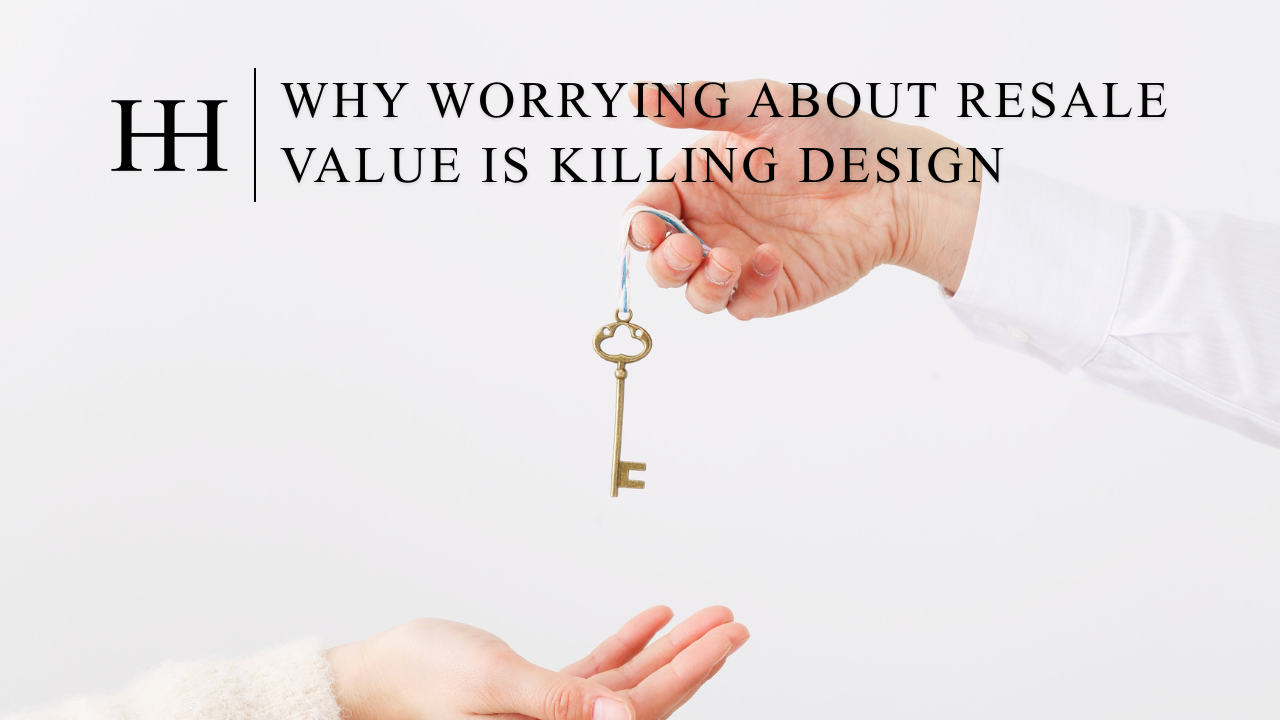Why Worrying About Resale Value is Killing Design
When it comes to remodeling or building a home, one phrase comes up again and again:
“We love that idea…but what about resale?”
It’s an understandable question. No one wants to make design decisions that might hurt their home’s future value. But here’s the problem: when every decision is made with resale in mind, you end up designing for someone who doesn’t even live there yet, instead of the people who do.
And that’s how so many homes lose their soul.
They play it safe. They blend in. They function…fine. But they never feel like you.
The truth is, the most valuable homes aren’t the ones that follow trends; they’re the ones that are designed thoughtfully and lived in joyfully.
The Fear of Resale and How It Shapes Design
Resale fear can be sneaky. It’s what leads to a house full of neutral paint colors, a kitchen layout that looks “good on paper” but never quite works, or a primary suite that doesn’t flow naturally with the rest of the house.
Designing around the idea of what a future buyer might like often limits what you actually need.
As Hannah Howland puts it, “Not every home is for every person, and that’s okay.”
It’s true. Some people need a three-car garage, others don’t even want one. Some families want a gym, a workshop, or a walk-in pantry. Others value open space and natural light above all else. A good home fits the people who live in it, not a hypothetical buyer years down the road.
What “Real Value” in Design Actually Means
Here’s the good news: designing for yourself doesn’t mean ignoring value. In fact, thoughtful, well-planned spaces hold more value because they function beautifully and stand the test of time.
True value comes from the things that make a home feel right:
A layout that flows naturally
Storage where you actually need it
Materials chosen for durability and beauty
Spaces that reflect how you live day-to-day
Those details might not show up on a real estate listing, but they’re what make a home desirable. A well-designed home isn’t about following what’s trendy; it’s about creating something that feels intentional, timeless, and easy to live in.
Finding the Balance Between Personalization and Practicality
Of course, there’s a balance. It’s smart to consider resale, just not at the expense of how you live now.
That’s where great design guidance matters. The right builder will help you create spaces that are personal yet universally appealing, like a custom mudroom that streamlines your daily routine or a kitchen layout that’s designed for your family but still timeless in form and function.
Custom doesn’t mean odd or overly niche. It means personal, thoughtful, and well-planned. When done right, it simply makes sense for you and anyone who might live there in the future.

